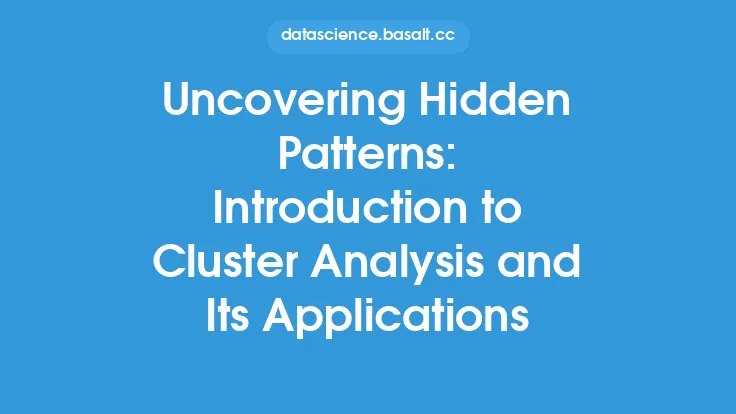Survey weighting is a crucial step in the survey research process, allowing researchers to adjust for non-response, undercoverage, and other sources of bias in their data. The goal of survey weighting is to create a sample that is representative of the population of interest, ensuring that the results of the survey are accurate and reliable. In this article, we will delve into the world of survey weighting, exploring its applications, methods, and best practices.
What is Survey Weighting?
Survey weighting is a statistical technique used to adjust the sample data to match the characteristics of the population. This is typically done by assigning weights to each respondent in the sample, with the weights reflecting the probability of selection, non-response, and other factors that may affect the representativeness of the sample. The weights are then used to calculate weighted estimates of population parameters, such as means, proportions, and regression coefficients.
Types of Survey Weights
There are several types of survey weights, each serving a specific purpose. The most common types of survey weights include:
- Base weights: These weights reflect the probability of selection and are typically calculated as the inverse of the selection probability.
- Non-response weights: These weights adjust for non-response and are typically calculated as the inverse of the response rate.
- Post-stratification weights: These weights adjust for differences between the sample and the population on key demographic variables, such as age, sex, and education level.
- Raking weights: These weights adjust for differences between the sample and the population on multiple variables simultaneously.
- Calibration weights: These weights adjust for differences between the sample and the population on a set of auxiliary variables, such as demographic and socioeconomic variables.
Methods of Survey Weighting
There are several methods of survey weighting, each with its strengths and limitations. Some of the most common methods include:
- Post-stratification: This method involves adjusting the sample to match the population on a set of demographic variables.
- Raking: This method involves adjusting the sample to match the population on multiple variables simultaneously.
- Calibration: This method involves adjusting the sample to match the population on a set of auxiliary variables.
- Model-based weighting: This method involves using statistical models to estimate the weights, rather than relying on traditional weighting methods.
Applications of Survey Weighting
Survey weighting has a wide range of applications in survey research, including:
- Estimating population parameters: Survey weighting allows researchers to estimate population parameters, such as means, proportions, and regression coefficients, with greater accuracy.
- Analyzing subgroups: Survey weighting allows researchers to analyze subgroups of the population, such as demographic or socioeconomic subgroups.
- Comparing groups: Survey weighting allows researchers to compare groups, such as treatment and control groups, with greater accuracy.
- Evaluating programs: Survey weighting allows researchers to evaluate the effectiveness of programs and policies, such as social programs or public health interventions.
Best Practices for Survey Weighting
To ensure the accuracy and reliability of survey weighting, researchers should follow best practices, including:
- Using high-quality data: Survey weighting requires high-quality data, including accurate and complete information on demographic and socioeconomic variables.
- Using appropriate weighting methods: Researchers should choose the most appropriate weighting method for their research question and data.
- Evaluating the effectiveness of weighting: Researchers should evaluate the effectiveness of weighting by comparing weighted and unweighted estimates.
- Documenting weighting procedures: Researchers should document their weighting procedures, including the methods used and the variables included in the weighting process.
Common Challenges in Survey Weighting
Survey weighting can be challenging, particularly when dealing with complex data sets or multiple sources of bias. Some common challenges in survey weighting include:
- Non-response: Non-response can be a significant challenge in survey weighting, particularly if the non-response rate is high or varies across subgroups.
- Undercoverage: Undercoverage can occur when certain subgroups are not represented in the sample, such as hard-to-reach populations.
- Measurement error: Measurement error can occur when the data are inaccurate or incomplete, such as when respondents provide incorrect or incomplete information.
- Model misspecification: Model misspecification can occur when the weighting model is incorrect or incomplete, such as when important variables are omitted from the model.
Future Directions in Survey Weighting
Survey weighting is a rapidly evolving field, with new methods and techniques being developed to address the challenges of survey research. Some future directions in survey weighting include:
- Using machine learning and artificial intelligence: Machine learning and artificial intelligence can be used to improve the accuracy and efficiency of survey weighting.
- Using big data and administrative data: Big data and administrative data can be used to improve the accuracy and completeness of survey weighting.
- Developing new weighting methods: New weighting methods, such as machine learning-based methods, are being developed to address the challenges of survey weighting.
- Improving the transparency and reproducibility of survey weighting: Improving the transparency and reproducibility of survey weighting is essential for ensuring the accuracy and reliability of survey research.





